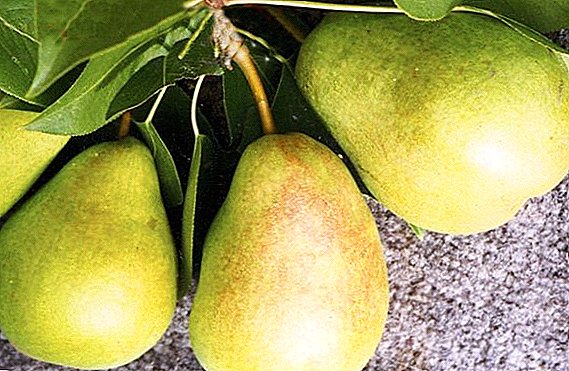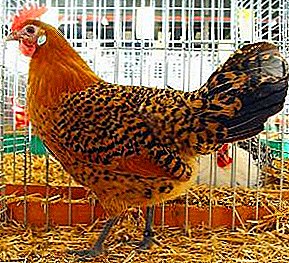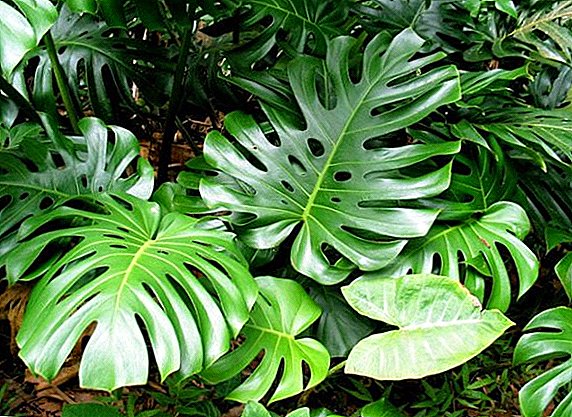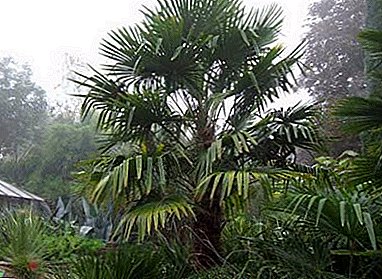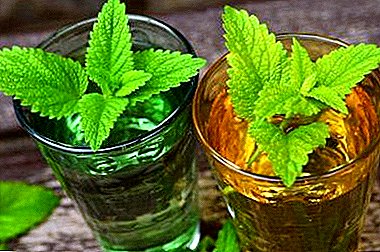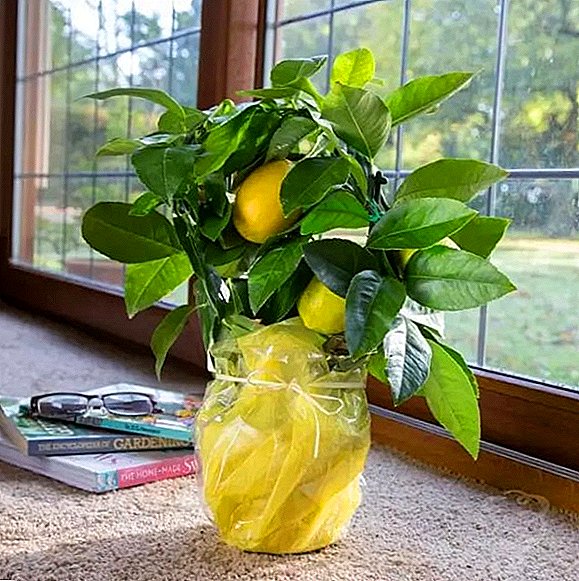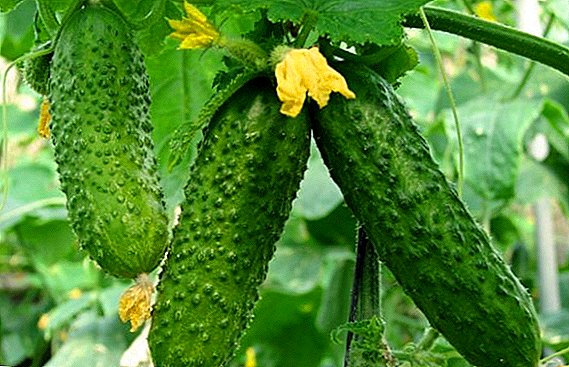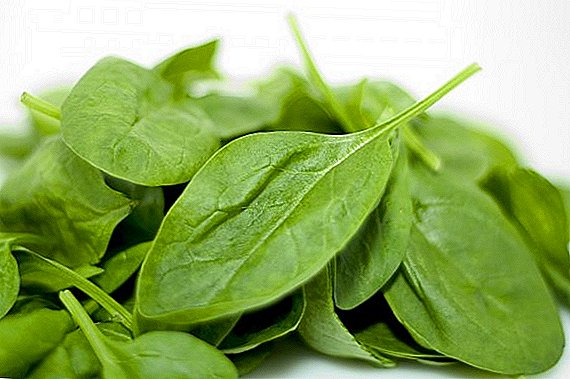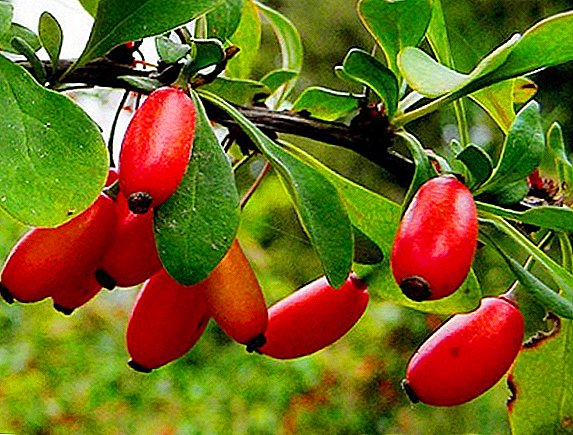 Barberry is a powerful bush meeting with spikes and various colors of berries. Actively use this shrub in landscape design due to the huge number of medium-sized bright fruits of the original pear-shaped form.
Barberry is a powerful bush meeting with spikes and various colors of berries. Actively use this shrub in landscape design due to the huge number of medium-sized bright fruits of the original pear-shaped form.
In order to grow a barberry, which will become your pride, it is not at all necessary to be a professional gardener, you just need to know the rules of planting and caring for this plant.
Dates and choice of place for landing
Barberry is an effective ornamental shrub with bright red, yellow or white fruits. The leaves of the barberry are elliptical and come in very different colors: green, red, yellow, purple. In spring the plant pleases with yellow flowers collected in bunches.  "Like a holiday fireworks, these bushes grow. Only autumn comes - all colors are played. " - so say poets about barberry, but such a description does not convey the beauty of this delightful shrub.
"Like a holiday fireworks, these bushes grow. Only autumn comes - all colors are played. " - so say poets about barberry, but such a description does not convey the beauty of this delightful shrub.
The fruits of barberry fragrant and widely used in medicine and cooking. They are distinguished by a mild sour taste and are great for compotes, jelly, syrups and preserves.
In growing it is quite unpretentious and resistant to cold. However, before planting, it must be remembered that in the shade the decorative leaves of the barberry lose their color. The more light there is, the brighter and more attractive will be the foliage of the bush.
If you like a lone barberry, then it is better to plant it at a distance of 1.5-2 m from the rest of the plantations. In close quarters, a beautiful, proportional bush will not grow.
If you plan to grow barberry in the garden as a hedge, then the bush should be formed more voluminous.
 To create a dense fence you need to plant 3-4 bush per meter. For chess placement, the seedlings are placed 25 cm apart. The distance between rows should be 45 cm. For a rarer fence, the number of plants is reduced.
To create a dense fence you need to plant 3-4 bush per meter. For chess placement, the seedlings are placed 25 cm apart. The distance between rows should be 45 cm. For a rarer fence, the number of plants is reduced.
If the barberry is grown for fruits, light is simply necessary for it, therefore the barberry needs to be planted not thickly, and also regularly thin out the bush.
Important! The immature berries of barberry contain a high concentration of alkaloids and are very poisonous.
For barberry suitable soils acidic. But if the land in your area is highly acidic (more than 7.0 pH), it is possible to add slaked lime to the soil before and after planting.
Since the stagnation of moisture can be detrimental to the barberry, it should be planted on high ground and sand should be added to the soil for drainage.
 Planting is carried out in the fall (mid-September - mid-October) or in the spring (third decade of March - mid-April). If the seedlings were in a container, they can be planted in the summer on an overcast day, providing the first days with enough sunlight.
Planting is carried out in the fall (mid-September - mid-October) or in the spring (third decade of March - mid-April). If the seedlings were in a container, they can be planted in the summer on an overcast day, providing the first days with enough sunlight.
Important! The barberry planted in the spring will actively grow, and the autumn seedlings over the winter will have time to harden and in the spring will begin to actively develop.
Preparatory work on the site
In order for the barberry to please with its healthy appearance, and care and cultivation did not cause trouble, you need clean up certain areas of work before planting:
- get rid of the weeds and roots of other plants;
- dig the ground;
- fertilize the soil (taking into account its acidity and fertility).
Did you know? Barberry thorns are nothing but transformed leaves.
Rules for planting young barberry seedlings
Before you grow a barberry in the country, you need to carry out a number of works:
- Prepare a hole for planting. Size - 40 × 40 × 40 cm.
- It is necessary to pour water into the pit so that it saturates the soil well, but does not stagnate. Then drainage is spread to the bottom - sawdust, dry leaves mixed with small stones or sand, and other materials that can serve as drainage.
- Pour a layer of sand and a layer of turf (leaf) earth mixed with compost or humus (8-10 kg) at the bottom of the pit. Instead of organic fertilizers, you can use mineral - superphosphate (200 g) and potassium sulfate (100 g). With increased soil acidity, add lime (400 g) and wood ash (200 g).
- Barberry seedlings are lowered into the hole, filling the empty space with prepared soil, well watered and mulched with compost or peat. The root neck should be on the ground surface.
- Cut off the upper part of the shoots, leaving 5-6 healthy kidneys from below.

Important! When planting you need to ensure that the roots of barberry are not in contact with fertilizers - this can cause a burn, and the seedlings will hurt or may die.
How to care for the barberry on the site
Barberry care includes a few procedures: watering, weeding, feeding, pruning, cutting and protecting against pests.
Watering, weeding and loosening the soil
Barberry - a plant that does not like excess moisture, so it is enough to water it once a week. Only young plants need abundant watering, and then for the time being until they get stronger. Water the plant should not be cold water directly under the root, trying not to wet the leaves.
In addition to watering, a mandatory procedure is regular weeding between the bushes, removal of root growth and loosening the soil around them. To facilitate care, it is recommended to mulch the soil with sawdust, peat or walnut shells.
Fertilization
Making a top dressing when planting a barberry will be enough for a plant for a year. The next lure is done next spring.
 Choosing the better to feed the barberry, give preference to nitrogen fertilizers. 20-30 g of urea is diluted in a bucket of water and fertilized each bush.
Choosing the better to feed the barberry, give preference to nitrogen fertilizers. 20-30 g of urea is diluted in a bucket of water and fertilized each bush.
This feeding is enough to make every 3-4 years.
However, if the barberry is grown for fruits, then after flowering and after the end of the season, the plant must be fertilized with a mixture of superphosphate (15 g) and potassium (10 g) under each bush. You can use ready-made fertilizers ("Kemira wagon"), which are made in early July.
The barberry, which grows as a hedge, needs to be fed most of all - it needs to be fertilized at least 2 times a year.
Important! Chemicals may adversely affect the characteristics of the fruit.
Literate pruning
Knowledge of how to properly cut the barberry will allow you to have on the site not only beautiful, but also a healthy plant.
Since the barberry branches grow almost vertically, shrub can be given any decorative form (ball, pyramid and others). The barberry painlessly transfers pruning before the start of sap flow, therefore it is necessary to form a bush in early spring, before the leaves open.
It should also be borne in mind that at first the growth of barberry will grow in different directions, so it is not recommended to plant it in the middle of the plot.
Since the bush trunks is a lot, the extra need to cut on the ring.
 For the purpose of thinning and maintaining sanitation, plants should be regularly cut off old, diseased, weak, dry and heavily thickened branches. In this case, the old branches can be cut either completely or partially - to form new branches. This anti-aging pruning should be carried out plants older than 10 years.
For the purpose of thinning and maintaining sanitation, plants should be regularly cut off old, diseased, weak, dry and heavily thickened branches. In this case, the old branches can be cut either completely or partially - to form new branches. This anti-aging pruning should be carried out plants older than 10 years.
Important! Strongly shorten the branches of barberry can not, because the flowers and fruits he appear on annual shoots.
Barberry wintering
In the first 2-3 years the barberry is covered for the winter with peat, dry foliage, spruce leaves or sacking. If the bush is voluminous, its branches are tightened with a rope or twine, they build a cylinder around the plant and put dry leaves inside, and cover it from above.
Adult bushes tolerate frosts well, so do not need shelter.
If the winter is frosty and the branches are frozen, they should be cut off in early spring.
Selection of neighbors for the barberry
Amazing compositions can be obtained by combining various shrubs. The barberry neighbors can be any shrubs, flowers and even trees. For example, dwarf varieties will not only decorate lawns and flower beds, but also protect flowers from trampling. They can also be planted at the foot of large trees.
Did you know? It is believed that the famous Lee Kin Yen was able to live to 252 years due to the daily consumption of the fruit of the barberry.

How to deal with pests and diseases of barberry
In order to recognize pests on time, you need to regularly pay attention to what the barberry looks like. The most dangerous for the barberry are such insects:
- aphids (leaves dry out and shrink);
- leafworm;
- sawfly;
- peppered flower
In addition to insects, barberry is prone to diseases like:
- powdery mildew;
- spotting;
- bacteriosis;
- withering;
- rust.

In order to cure the plant, you need to get rid of pathogens.
So, with the defeat of powdery mildew, the bush is treated with 1% solution of colloidal sulfur.
If the barberry is struck by rust, it is treated with Bordeaux liquid (1%) once a week. If the disease has spread widely, then the plant is best destroyed.
When spotting twice (before and after flowering) use a solution of copper oxychloride (30-40 g per 10 liters of water).
In bacteriosis (cracks and tumors on the stems), the patient's shoot is cut to a healthy part of the bush and burned, and the plant itself is treated with Bordeaux liquid.
The barberry on the plot is a riot of colors that lasts from spring to autumn. Its amazing beauty allows you to create luxurious compositions, and use gorgeous flavoring and healing qualities for cooking and healing tinctures.


